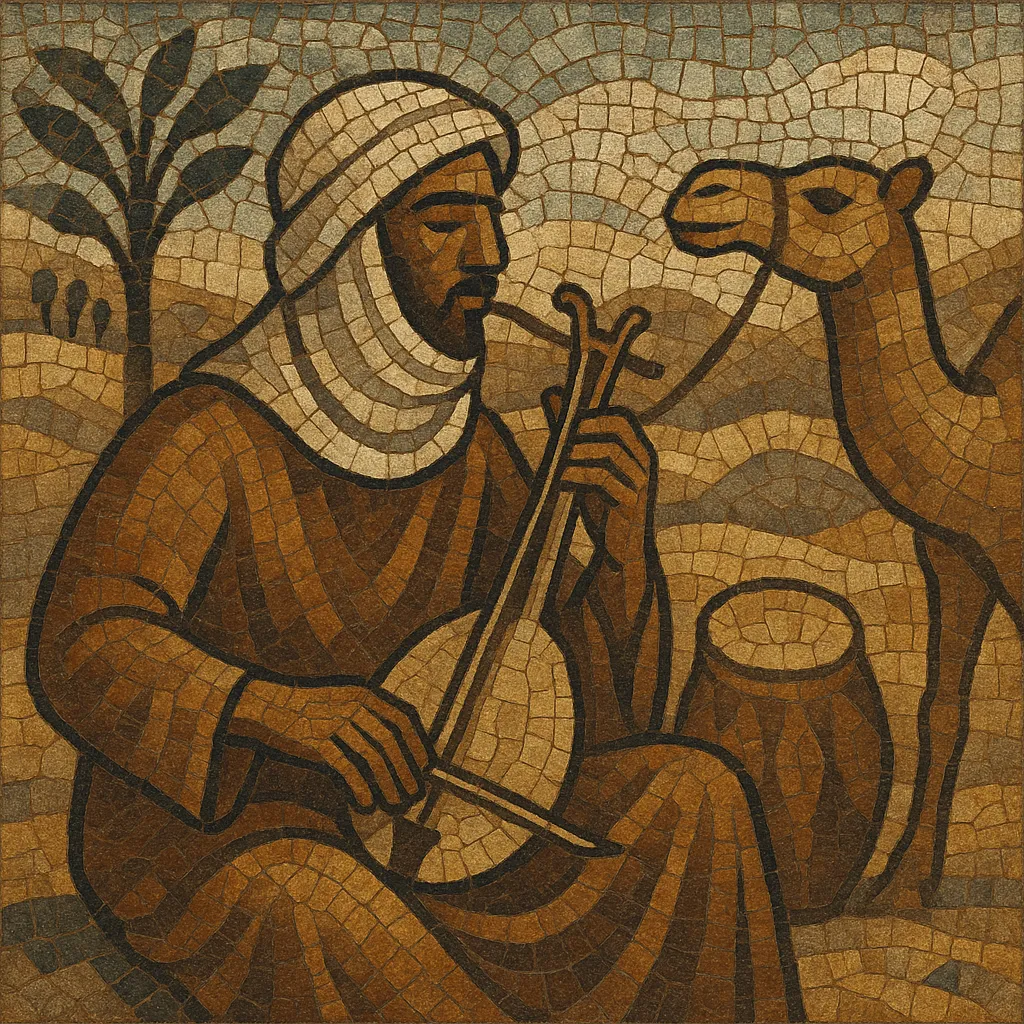
Bedouin music is the traditional music of nomadic Arab tribes of the Arabian Peninsula and adjoining deserts of the Levant and Sinai. It is a poetry-centered, orally transmitted practice that accompanies daily life—herding, travel, celebrations, and communal dances—and expresses themes of landscape, lineage, honor, love, and longing.
Musically it is predominantly monophonic or lightly heterophonic, built on Arabic maqām melodic modes (such as Ḥijāz, Rāst, and Bayāt) with rich melisma and microtonal inflection. Vocal performance alternates between solo declamation and call-and-response choruses, often supported by the spike fiddle rabābah, frame drums (daff/ṭār), small barrel drums, and, in some regions, the oud and reed pipes (mijwīz, arghūl, ney). Signature forms include chanted camel-driver songs (taghrūda), male chorus-and-drum line dances like ayyālah, and Najdi/Gulf samrī songs.
While localized across many tribes and territories, Bedouin music shares a common aesthetic of direct, emotive vocal delivery, tightly patterned percussion, and poetic performance (notably in Nabati verse) that pre-dates Islam yet has coexisted with Islamic devotional sound practices for centuries.
Bedouin musical practice predates Islam and is rooted in the oral poetry and chant traditions of nomadic tribes across central and northern Arabia. Early forms involved solo declamation of verse (often Nabati poetry) with flexible rhythm, functional chant to pace caravan travel (taghrūda), and drum-accompanied social gatherings. With the rise of Islam in the 7th century, Bedouin communities remained largely oral in their music-making while interacting with evolving urban Arabic musical culture.
By the medieval period, a core sound palette had stabilized: the rabābah spike fiddle for lyrical accompaniment, frame drums (daff/ṭār) and small barrel drums to mark steady, processional rhythms, and regional use of oud and reed pipes. Distinctive communal forms flourished, notably ayyālah (a chorus-and-drum line dance that enacts unity and valor) and samrī (a Najdi/Gulf seated chorus with duff patterns and antiphonal singing). Chant-led travel songs and praise/boasting verses remained integral to tribal identity.
As Bedouin tribes moved seasonally, musical practice diffused through the Arabian Peninsula into today’s Saudi Arabia, Jordan, the Negev/Sinai, Oman, the UAE, Kuwait, Iraq, and Syria. Coastal and oasis contacts introduced instruments and rhythmic patterns from neighboring Arab urban centers, while Bedouin aesthetics (poetic delivery, call-and-response, and percussion patterns) influenced neighboring folk and later popular Gulf styles.
In the 20th century, radio and recording selectively captured Bedouin repertoire, while urban stages adapted Bedouin song and dance for festivals. Core practices like ayyālah and taghrūda gained international visibility and were inscribed on UNESCO’s lists of Intangible Cultural Heritage, spurring transmission programs. Contemporary Gulf and Jordanian artists incorporate Bedouin meters, duff patterns, and Nabati poetry into modern arrangements, keeping the style audible within Khaleeji pop while community tradition-bearers continue the oral line.

